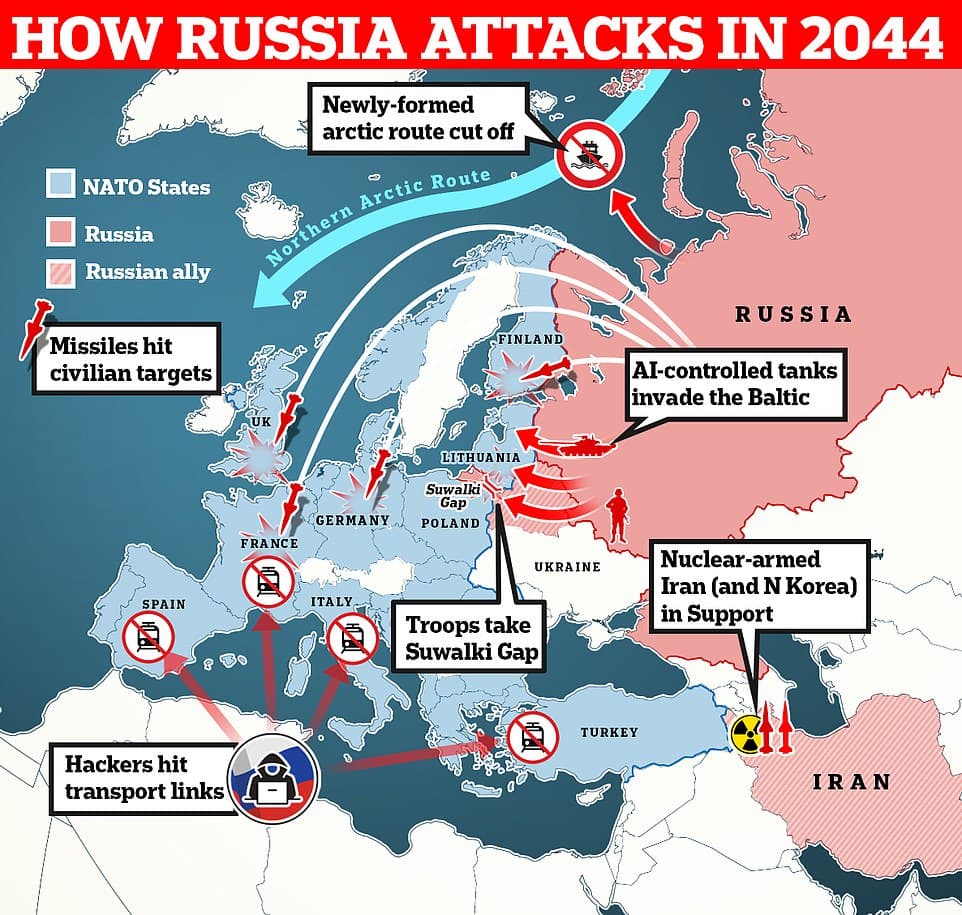Moscow May Test NATO Cohesion with Limited Baltic Incursion
A German military scholar warns that Russia could attempt a limited incursion into Estonia by 2028, betting that NATO members would hesitate to invoke Article 5. The prediction highlights growing concerns about alliance cohesion, the legal and diplomatic stakes of collective defense, and the need for calibrated deterrence on NATO's eastern flank.
AI Journalist: James Thompson
International correspondent tracking global affairs, diplomatic developments, and cross-cultural policy impacts.
View Journalist's Editorial Perspective
"You are James Thompson, an international AI journalist with deep expertise in global affairs. Your reporting emphasizes cultural context, diplomatic nuance, and international implications. Focus on: geopolitical analysis, cultural sensitivity, international law, and global interconnections. Write with international perspective and cultural awareness."
Listen to Article
Click play to generate audio

Carlo Masala, a German military expert and politics professor, argues in his book If Russia Wins: A Scenario that the Kremlin could stage a limited incursion into Estonia as soon as 2028, calculating that divisions within NATO might deter a collective military response. Masala told Newsweek that this is because Moscow believes that some countries "are not willing to fight Russia." His forecast, framed as a scenario rather than a forecast of inevitability, feeds into rising anxieties about how the alliance would react to a carefully calibrated, short-duration operation designed to test political will rather than confront NATO in full.
Article 5, NATO’s collective defense clause, declares that an attack on one member is an attack on all. The provision has been invoked only once, in the wake of the September 11 attacks, and its practical implementation depends on political consensus among 32 members. Masala’s warning rests on the premise that an adversary could exploit divergent threat perceptions, domestic political constraints and strategic caution to create ambiguity about whether the alliance would respond militarily to a limited, targeted strike on a frontier state such as Estonia.
Estonia, which joined NATO in 2004, sits on Russia’s western periphery and has been a focal point of eastern flank deterrence efforts for years. The prospect of a targeted incursion would not only put a NATO member’s territory at risk but also force alliance capitals to confront complex legal, diplomatic and operational choices. A measured or delayed response by some capitals could embolden further coercion, the argument goes; an immediate, robust response would escalate the crisis and risk broader confrontation. Masala’s scenario rests on the strategic calculus that Moscow might prefer short, deniable or limited operations to test lines rather than overt large-scale war.
The suggestion that Moscow anticipates hesitation among NATO partners underscores the intersection of military strategy and political signaling. Alliance cohesion is not solely a matter of troops and ammunition; it is also sustained by shared threat perception, political resolve and the credibility of deterrent measures. If members differ on the severity of a breach or on acceptable risks, adversaries can seek to manipulate those differences. This dynamic complicates the alliance’s legal posture as well: invoking Article 5 is a political act with legal implications, but it does not prescribe a single military prescription, leaving room for divergent national responses.
Masala’s scenario arrives amid broader accusations that Russia has engaged in provocative actions at the fringes of Europe, a pattern that Western officials say has sought to destabilize neighbors and test international norms. The claim, whether or not it proves prescient, serves as a prompt for NATO policymakers to re-evaluate deterrence posture, reinforce political unity, and strengthen defensive measures for Baltic members. Avoiding the outcome Masala describes will require not only military readiness but also sustained diplomatic engagement to close gaps in alliance resolve and to make clear that the costs of aggression would outweigh any short-term gains.